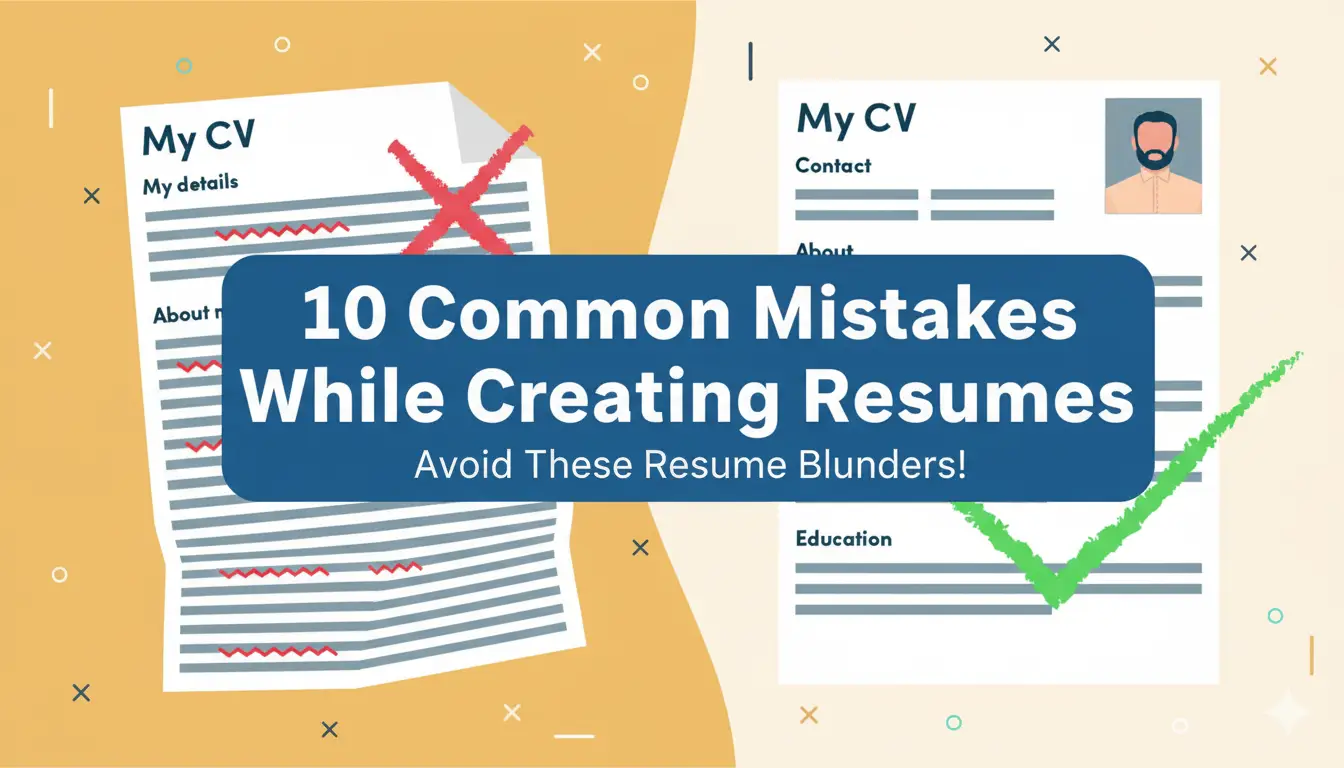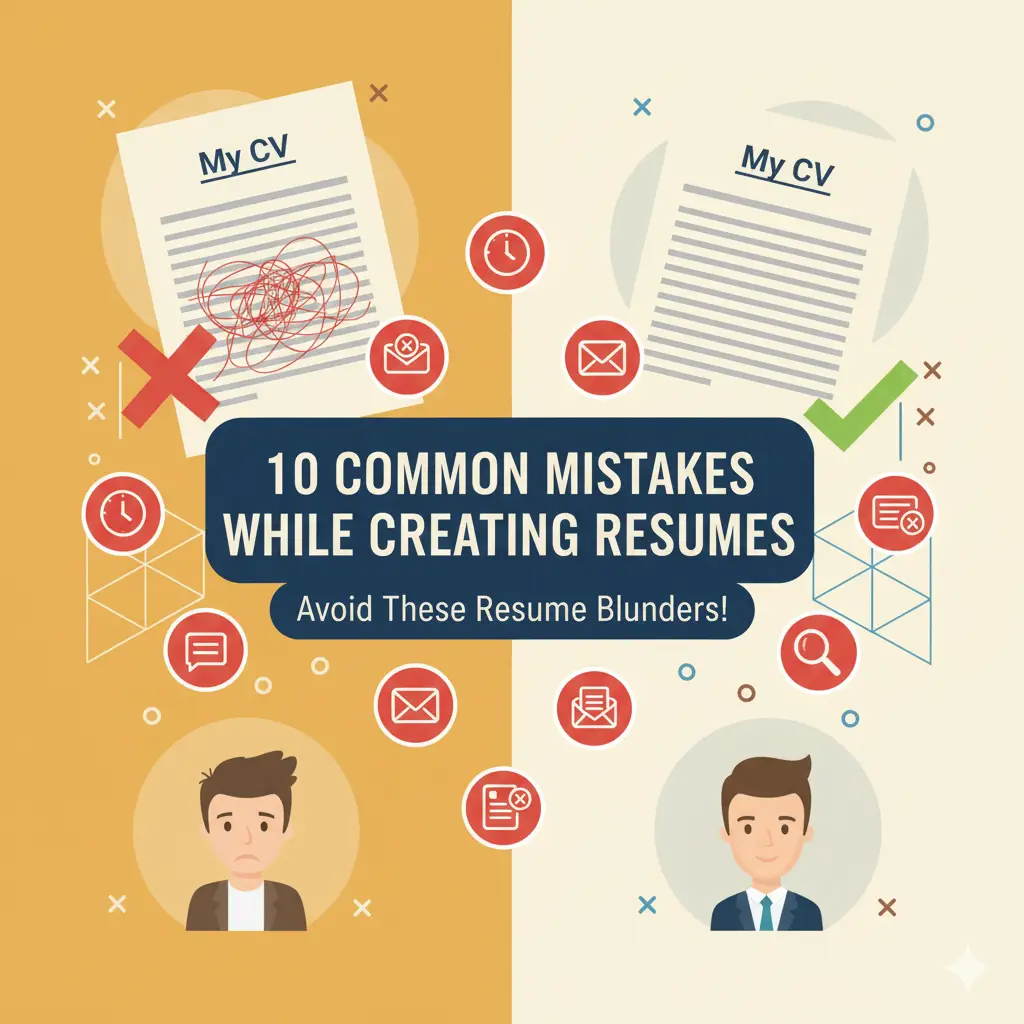
1. Using a Generic Resume for Every Job
One of the biggest mistakes job seekers make is sending the same resume to every employer. A generic resume doesn’t show that you’ve researched the role or tailored your skills to match the requirements. Employers look for specific experiences and qualifications that align with the position. Taking time to customize your resume by using relevant keywords, focusing on matching achievements, and reshaping your skills section can dramatically increase your chances of making it past both ATS systems and recruiters.
2. Overloading with Unnecessary Details
A resume should tell your professional story concisely—not include every detail of your career or personal life. Adding outdated jobs, irrelevant hobbies, or personal information such as age, marital status, or photographs (in regions where it isn’t required) can make your resume appear cluttered and unprofessional. Recruiters often skim resumes in seconds, so including only the most relevant skills, experiences, and achievements keeps the focus on what truly matters for the role.
3. Poor Formatting and Design
Your resume may contain great content, but poor formatting can ruin its impact. Flashy fonts, multiple colors, or complicated designs may seem creative but can confuse recruiters and Applicant Tracking Systems (ATS). Consistency in font type, size, spacing, and headings ensures clarity and professionalism. A clean and structured design makes your resume easy to scan quickly, which is exactly what hiring managers prefer when going through large stacks of applications.
4. Forgetting to Include Keywords
Most companies rely on ATS to filter resumes before they reach human recruiters. These systems scan for job-specific keywords such as technical skills, certifications, and relevant job titles. If your resume doesn’t include them, it may never even be seen. Carefully study the job description and incorporate its language naturally throughout your resume—especially in your skills and work experience sections. This makes it easier for ATS software to recognize your fit for the role.
5. Writing Vague Job Descriptions
Listing responsibilities without demonstrating impact is a common resume flaw. Phrases like “worked on projects” or “responsible for managing tasks” don’t communicate value to an employer. Instead, use strong action verbs like led, improved, created, and optimized—and back them up with measurable results. For example, “Led a team of five to implement a new network system, reducing downtime by 30%” shows both your role and your achievement. This approach highlights your contribution and helps you stand out.
6. Typos and Grammatical Errors
Simple mistakes like misspelled words or poor grammar can make even the most experienced professional look careless. Recruiters may interpret these errors as a lack of attention to detail or professionalism. Proofreading is essential, and using tools like Grammarly or asking a trusted colleague to review your resume can help catch errors you might miss. Since your resume represents your communication skills and professionalism, it’s critical to ensure it is error-free.
7. Leaving Out Achievements
Many resumes read like job descriptions rather than personal success stories. Simply listing what you were responsible for doesn’t make you memorable. Employers want to know what you accomplished in your role—whether that’s increasing revenue, improving efficiency, or delivering successful projects. Always frame your experience in terms of results and outcomes, using numbers or measurable examples whenever possible. This turns your resume into a document that demonstrates value rather than just listing duties.
8. Using an Unprofessional Email Address
Your contact details may seem minor, but they set the tone for your professionalism. Using outdated or casual email addresses such as funnyguy123@gmail.com can immediately create the wrong impression. Instead, create a professional email account using your name or a variation of it. For example, firstname.lastname@gmail.com is simple, clean, and professional—helping recruiters take you seriously right from the start.
9. Making It Too Long or Too Short
Finding the right length for your resume can be tricky. Too short, and it may appear you lack experience; too long, and recruiters may not bother reading it. Generally, one to two pages is ideal for most candidates. Early-career professionals can stick to a single page, while more experienced professionals may require two. The key is to include only the most relevant and recent experiences, cutting out anything that doesn’t add value to the position you’re applying for.
10. Ignoring Readability
Even a well-written resume can be ignored if it’s hard to read. Long paragraphs, inconsistent formatting, and dense blocks of text discourage recruiters from reviewing your application thoroughly. Instead, use bullet points to highlight key achievements, keep sentences concise, and structure your resume with clear section headings. A recruiter should be able to quickly scan your resume and identify your most important skills and accomplishments in seconds.
Final Thoughts
Creating a resume is more than just listing your work history—it’s about marketing yourself effectively. Avoiding these common mistakes will not only help your resume pass through ATS filters but also ensure it leaves a strong impression on hiring managers. Focus on clarity, relevance, and professionalism, and you’ll greatly increase your chances of securing the interview and landing the job you want.

